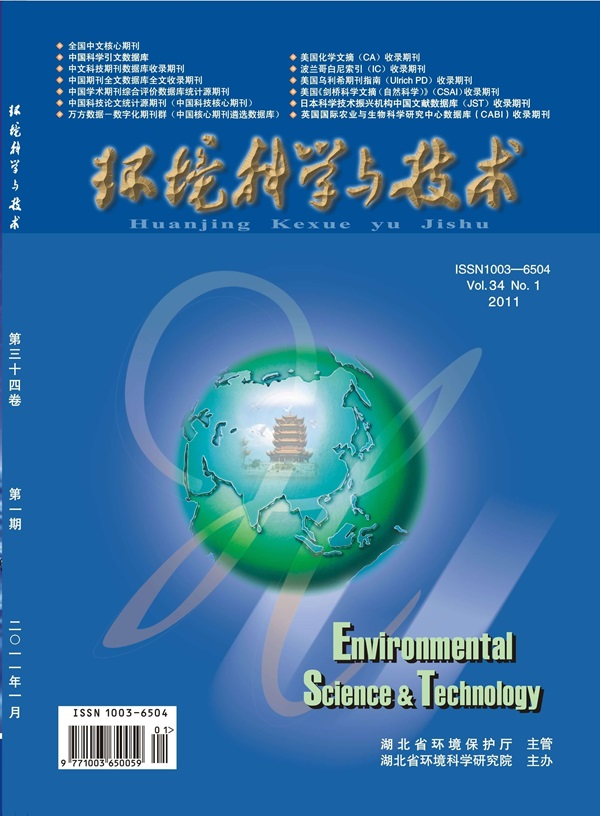Aliphatic Disinfection Byproducts Induced Antibiotic Resistance in Escherichia coli through Cell Wall Alteration.
IF 10.8
1区 环境科学与生态学
Q1 ENGINEERING, ENVIRONMENTAL
引用次数: 0
Abstract
Disinfection is a critical step in drinking water treatment, yet studies revealed that it would promote the dissemination of antibiotic resistance, and disinfection byproducts (DBPs) may act as contributors. In this study, we conducted a high-throughput assessment of antibiotic resistance development in the model strain Escherichia coli K12 after 50-day exposure to 15 aliphatic DBPs commonly found in drinking water against 8 different classes of antibiotics. The results showed that most treated bacteria developed resistance to cell wall-targeting antibiotics such as ampicillin and fosfomycin, with resistance levels increasing by 1.16- to 6.39-fold, higher than for other classes of antibiotics. Multidrug resistance was observed in the tribromoacetonitrile (TBAN), bromonitromethane (BNM), and dibromonitromethane (DBNM) groups. DBPs exposure induced the accumulation of reactive oxygen species (ROS) and damaged the bacterial cell membrane. Genomic and transcriptomic analyses revealed mutations and differential expression in genes related to cell wall synthesis and structure, indicating that exposure to DBPs will influence the bacterial cell wall. Nontargeted ultra-performance liquid chromatography-tandem mass spectrometry (UPLC-MS/MS) analysis further confirmed the cell wall structure alteration by the increased proportion of noncanonical d-amino acids in peptidoglycan, the major component of the cell wall, potentially explaining the observed resistance to cell wall-targeting antibiotics. Collectively, this study highlights the risk of aliphatic DBPs-induced antibiotic resistance, likely driven by alterations in the bacterial cell wall.脂肪族消毒副产物通过细胞壁改变诱导大肠杆菌耐药。
消毒是饮用水处理的关键步骤,但研究表明,它会促进抗生素耐药性的传播,而消毒副产物(DBPs)可能起到推动者的作用。在这项研究中,我们对模型菌株大肠杆菌K12在暴露于饮用水中常见的15种脂肪族dbp 50天后对8种不同类别抗生素的耐药性进行了高通量评估。结果表明,大多数经处理的细菌对氨苄西林和磷霉素等细胞壁靶向抗生素产生了耐药性,其耐药水平增加了1.16- 6.39倍,高于其他类别的抗生素。三溴乙腈(TBAN)、溴溴甲烷(BNM)和二溴溴甲烷(DBNM)组均出现多重耐药。DBPs暴露可诱导活性氧(ROS)的积累并破坏细菌细胞膜。基因组和转录组学分析揭示了细胞壁合成和结构相关基因的突变和差异表达,表明暴露于DBPs会影响细菌细胞壁。非靶向超高效液相色谱-串联质谱(UPLC-MS/MS)分析进一步证实了细胞壁结构的改变,即细胞壁主要成分肽聚糖中非规范d-氨基酸的比例增加,这可能解释了观察到的对细胞壁靶向抗生素的耐药性。总的来说,这项研究强调了脂肪族dbps诱导的抗生素耐药性的风险,可能是由细菌细胞壁的改变驱动的。
本文章由计算机程序翻译,如有差异,请以英文原文为准。
求助全文
约1分钟内获得全文
求助全文
来源期刊

环境科学与技术
环境科学-工程:环境
CiteScore
17.50
自引率
9.60%
发文量
12359
审稿时长
2.8 months
期刊介绍:
Environmental Science & Technology (ES&T) is a co-sponsored academic and technical magazine by the Hubei Provincial Environmental Protection Bureau and the Hubei Provincial Academy of Environmental Sciences.
Environmental Science & Technology (ES&T) holds the status of Chinese core journals, scientific papers source journals of China, Chinese Science Citation Database source journals, and Chinese Academic Journal Comprehensive Evaluation Database source journals. This publication focuses on the academic field of environmental protection, featuring articles related to environmental protection and technical advancements.
 求助内容:
求助内容: 应助结果提醒方式:
应助结果提醒方式:


